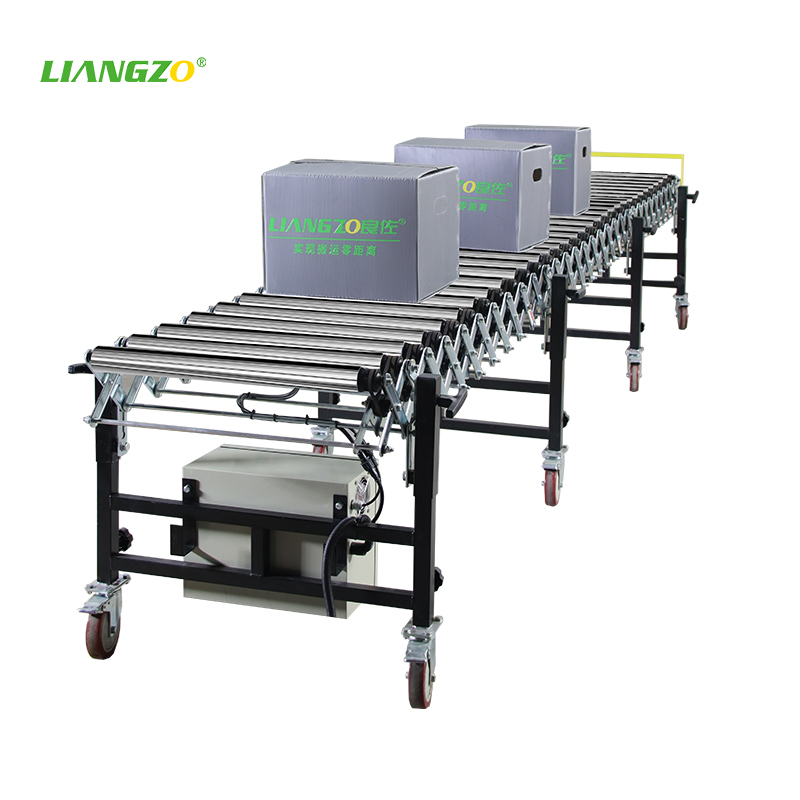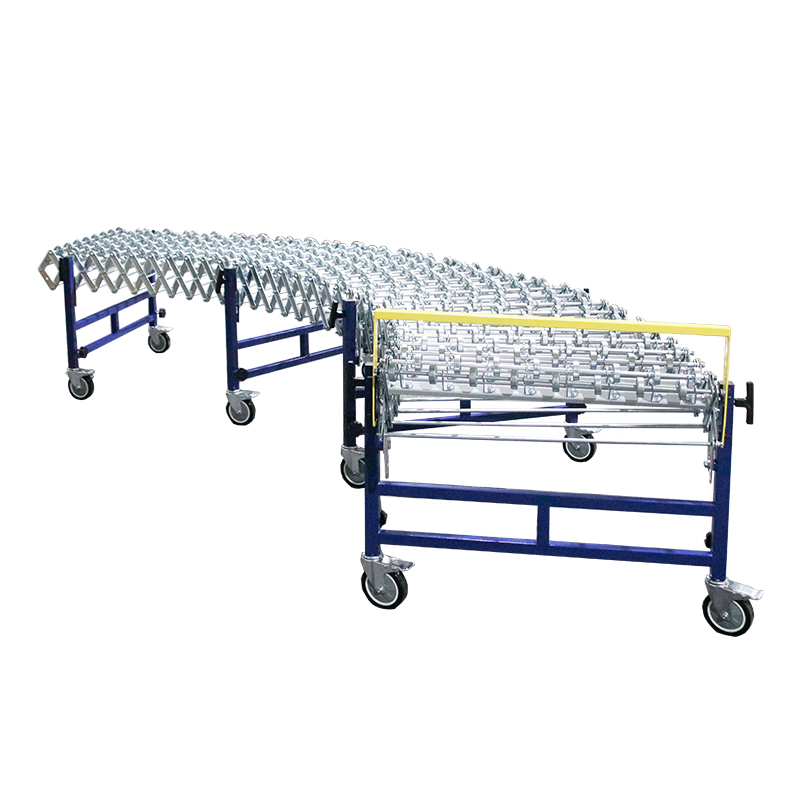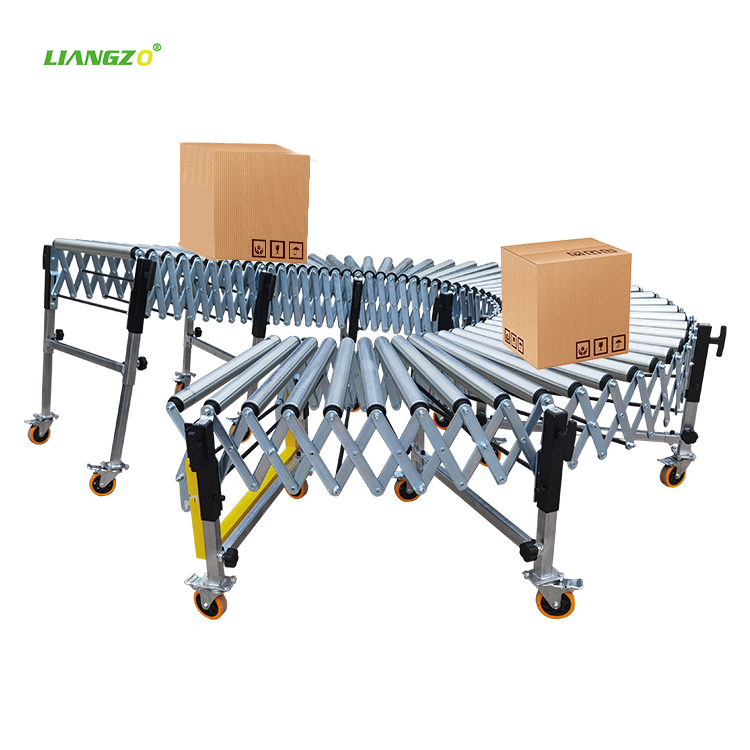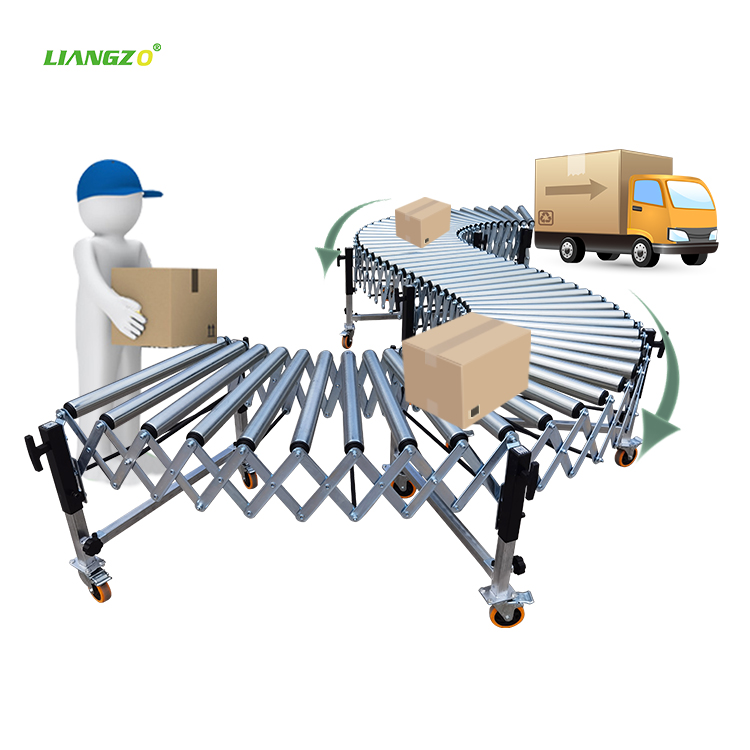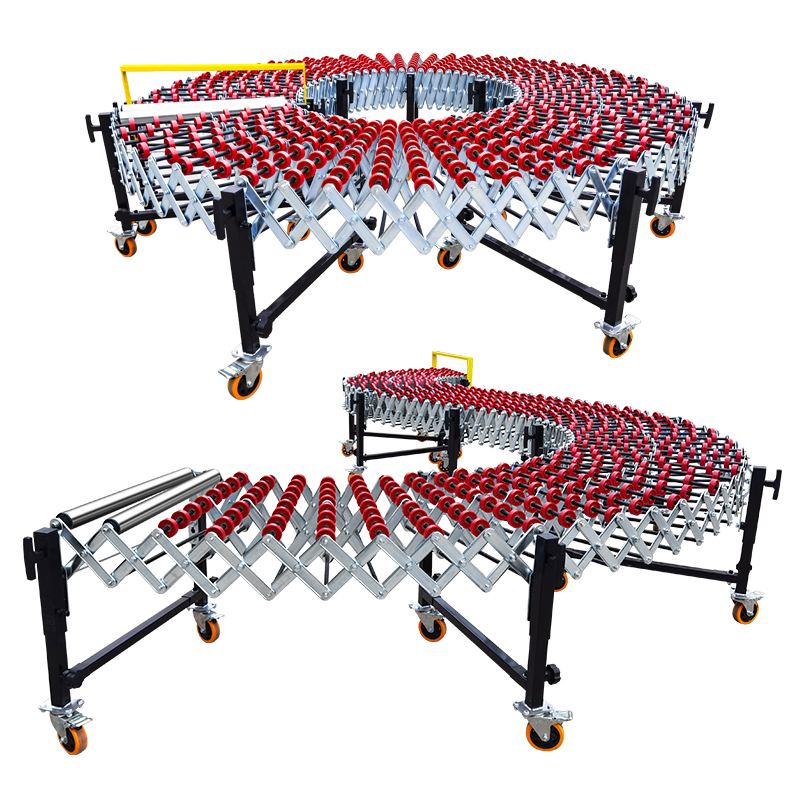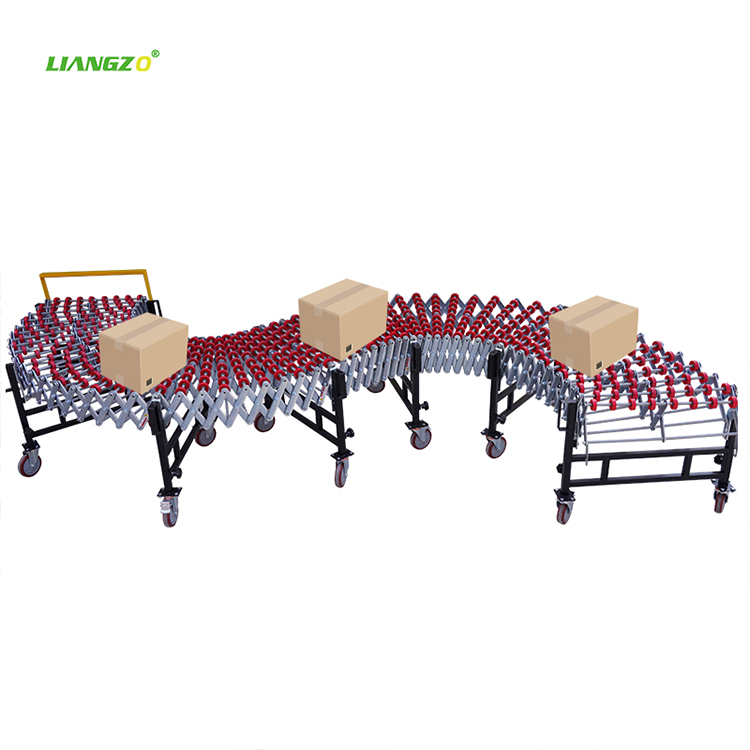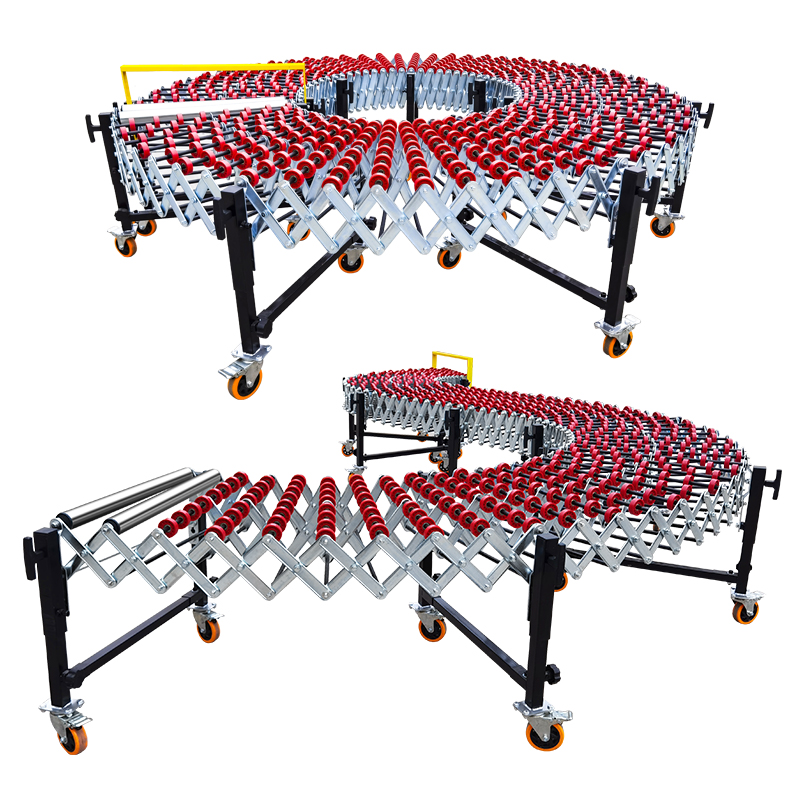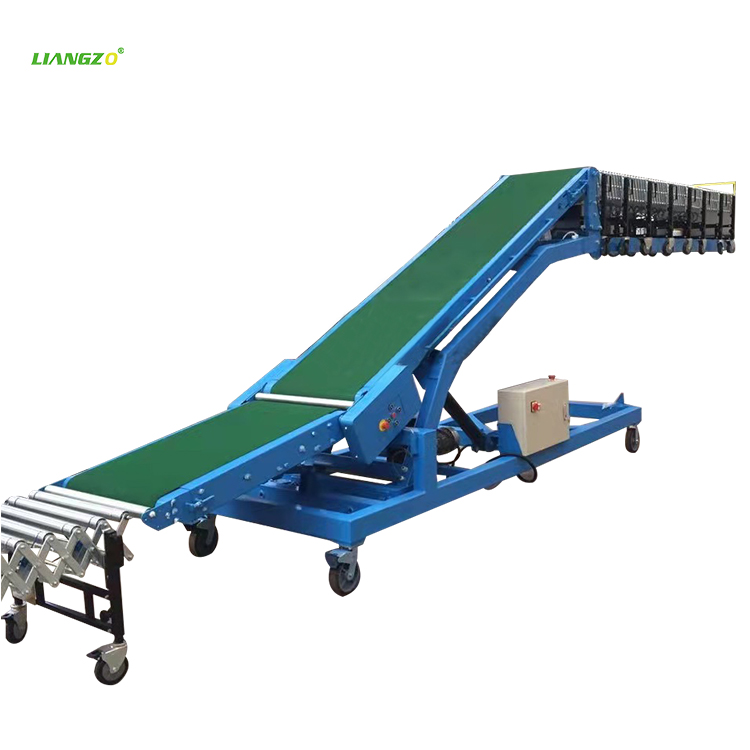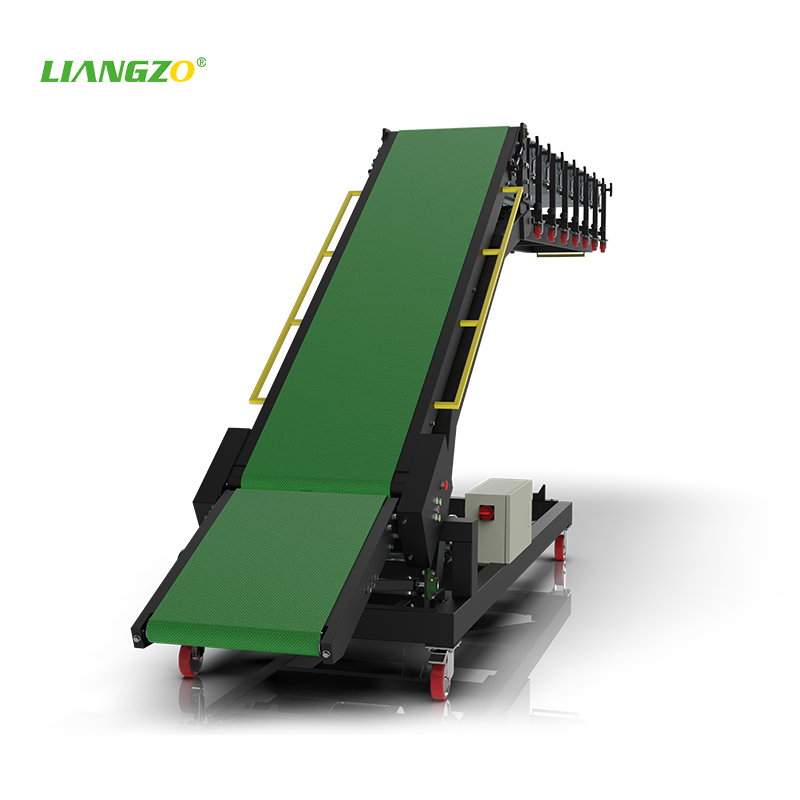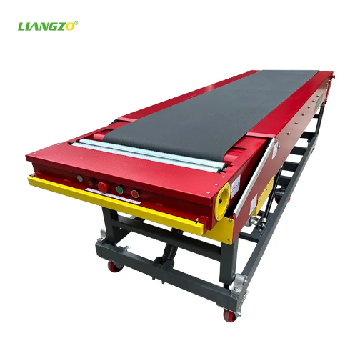In the relentless pursuit of speed, accuracy, and cost-effectiveness within modern manufacturing and distribution, a silent workhorse is driving a revolution: the packaging conveyor system. Far from being mere metal pathways for boxes, today's sophisticated conveyor technologies are pivotal strategic assets, delivering dramatic and measurable improvements in operational efficiency across countless industries. From the factory floor to the warehouse dock, these systems are streamlining processes, eliminating bottlenecks, and fundamentally reshaping how goods move.
The Efficiency Imperative: Why Movement Matters
In today's hyper-competitive global marketplace, operational efficiency isn't just desirable; it's existential. Businesses face constant pressure to:
Reduce Costs: Minimize labor, energy, waste, and overhead.
Increase Throughput: Produce and ship more goods, faster.
Enhance Accuracy & Quality: Eliminate errors, damage, and mis-ships.
Improve Flexibility: Adapt quickly to changing product mixes, order sizes, and market demands.
Optimize Space: Make the most of valuable floor real estate.
Enhance Worker Safety & Ergonomics: Reduce strain and injury risks.
Traditional manual material handling – lifting, carrying, pushing carts – is inherently slow, physically demanding, prone to errors, and difficult to scale. This is where the automated flow of a well-designed packaging conveyor system delivers transformative benefits.
Unpacking the Efficiency Gains: Key Benefits of Packaging Conveyors.
1. Accelerated Throughput & Reduced Cycle Times:
Constant Motion: Conveyors move products continuously at controlled speeds, significantly outpacing manual handling. Bottlenecks caused by workers walking or waiting are eliminated.
Synchronized Flow: Systems integrate seamlessly with upstream processes (filling, capping, labeling) and downstream processes (palletizing, sortation, shipping), ensuring a smooth, uninterrupted flow. Products aren't left sitting idle.
High-Speed Capabilities: Modern conveyors, especially belt and roller types, can operate at very high speeds, perfectly matching the output of fast automated packaging machines (like fillers, cartoners, case packers).
Reduced Handling Time: Direct transfer between processes via conveyors minimizes the time spent picking up, moving, and setting down products.
2. Significant Labor Optimization & Cost Reduction:
Automating Repetitive Tasks: Conveyors eliminate the need for manual transportation of products between packaging stations, inspection points, and accumulation areas. Workers are freed from physically demanding, low-value tasks.
Reallocating Skilled Labor: Freed-up personnel can be redeployed to higher-value tasks requiring judgment, quality control, machine oversight, maintenance, or customer service.
Reduced Labor Costs: While an investment, conveyors often lead to substantial long-term savings by reducing the headcount required for material movement, especially in high-volume operations or multi-shift environments.
Consistent Output Regardless of Staffing: Conveyors aren't affected by breaks, fatigue, or turnover, maintaining consistent output levels.
3. Enhanced Accuracy and Reduced Errors:
Controlled Path: Products follow a predetermined route, minimizing the risk of misrouting or items ending up in the wrong location compared to manual cart pushing.
Integrated Tracking: Conveyor systems easily integrate with barcode scanners, RFID readers, and vision systems. Products can be automatically identified, tracked, and sorted based on destination (e.g., specific pallet lanes, shipping doors, returns area), drastically reducing misshipping.
Reduced Manual Handling = Reduced Damage: Less human contact during transit inherently lowers the risk of drops, impacts, and other handling damage, improving product quality and reducing waste/costs associated with damaged goods.
Automated Diverting: Sortation systems (pushers, pop-up wheels, cross-belt sorters) ensure products are accurately directed without manual intervention.
4. Optimized Space Utilization:
Vertical Integration: Conveyors can utilize overhead space (power & free, overhead chain conveyors) or mezzanines, freeing up valuable floor space for core production or storage activities. Spiral conveyors efficiently move products between different floor levels.
Compact Layouts: Well-designed conveyor layouts follow efficient flow paths, minimizing wasted aisle space needed for manual cart traffic or forklift maneuvering.
Accumulation Buffers: Smart accumulation conveyors allow products to temporarily buffer in a controlled manner without stopping upstream processes, smoothing flow surges and optimizing space use compared to static staging areas.
5. Improved Worker Safety & Ergonomics:
Reduced Manual Lifting & Carrying: The primary cause of musculoskeletal disorders (MSDs) in manufacturing/warehousing is eliminated. Workers are no longer straining to move heavy or bulky packages.
Elimination of Cart/Pallet Jack Traffic: Reducing manual carts and forklifts moving through work areas significantly lowers the risk of collisions and pedestrian accidents.
Better Ergonomics at Workstations: Conveyors can be height-adjustable and position products precisely at ergonomic working heights for packing, inspection, or labeling tasks, reducing strain and fatigue.
Safer Environment: Clear conveyor paths reduce clutter and trip hazards associated with manually staged goods.
6. Increased Flexibility & Scalability:
Modular Design: Modern conveyor systems are built with standardized, modular components (straights, curves, merges, diverts, supports). This allows for relatively easy reconfiguration to accommodate new product lines, changes in layout, or process improvements. Lines can be extended or shortened.
Variable Speed Control: Speeds can be adjusted to match changing production rates or specific process requirements.
Accommodating Diverse Products: Different conveyor types (belt, roller, chain, plastic chain) and accessories (side guides, cleats, pop-up stops) can handle a vast array of product sizes, weights, and shapes – from lightweight cosmetics to heavy appliances.
Scalability: Conveyor systems can be designed to scale with business growth. Additional modules or parallel lines can be added incrementally.
7. Better Process Control & Data Collection:
Visibility: Products in motion on conveyors are visible, making it easier to monitor flow, identify bottlenecks immediately, and manage work-in-progress (WIP).
Integration with Control Systems: Conveyors are integral parts of larger Supervisory Control and Data Acquisition (SCADA) or Manufacturing Execution Systems (MES). This provides real-time data on line speed, throughput, stoppages, and overall equipment effectiveness (OEE).
Traceability: Combined with scanning/tracking systems, conveyors enable precise product traceability from packaging through shipping, crucial for quality control, recalls, and compliance.
Beyond the Basics: Advanced Conveyor Technologies Driving Peak Efficiency
The evolution of conveyor systems continues, introducing even greater levels of efficiency:
Automated Guided Vehicles (AGVs) & Autonomous Mobile Robots (AMRs): While not traditional conveyors, these flexible robotic systems often integrate with or complement fixed conveyor networks, providing dynamic, on-demand material movement, especially in complex or changing layouts.
"Smart" Conveyors with Integrated Intelligence: Sensors embedded along the conveyor line monitor product flow, detect jams, track individual items, and communicate status to central control systems for predictive maintenance and real-time optimization.
High-Speed Sortation Systems: Advanced cross-belt sorters, tilt-tray sorters, and bomb bay sorters achieve incredibly high sortation rates (thousands of items per hour) with extreme accuracy, essential for e-commerce fulfillment centers and large-scale distribution.
Energy-Efficient Motors & Drives: Variable Frequency Drives (VFDs) and high-efficiency motors reduce energy consumption by matching motor speed to actual load requirements, especially important on accumulation sections.
Low-Friction Belting & Rollers: Innovations in materials reduce the power needed to move conveyors, lowering energy costs and wear-and-tear.
Industry Spotlights: Efficiency Gains in Action
Food & Beverage: Conveyors seamlessly link filling, capping, labeling, case packing, and palletizing, handling high volumes hygienically and at high speed. Accumulation buffers prevent jams during case erector or palletizer changeovers. Result: Increased line output, reduced labor in harsh environments, improved hygiene.
E-commerce Fulfillment: Complex networks of conveyors transport individual items from picking zones through packing stations to high-speed sortation systems that route them to specific outbound docks based on carrier and destination. Result: Faster order fulfillment, reduced mis-sorts, ability to handle massive peak volumes (e.g., Black Friday).
Pharmaceuticals: Precision conveyors provide gentle, controlled handling of vials, syringes, and blister packs through labeling, inspection, and serialization stations. Integrated tracking ensures strict chain-of-custody. Result: Enhanced product safety, compliance with regulations (e.g., DSCSA), reduced contamination risk.
Automotive Parts: Heavy-duty roller or chain conveyors move bulky components (engines, transmissions) between assembly stations and packaging areas. Overhead conveyors optimize floor space. Result: Safe handling of heavy items, efficient flow through assembly, minimized damage.
Third-Party Logistics (3PLs): Conveyors are the backbone of efficient cross-docking and sortation facilities, rapidly moving diverse products from receiving to outbound shipping with minimal handling and storage. Result: Faster turnaround times for customer shipments, maximized facility throughput.
The Investment Equation: ROI of Packaging Conveyors
While implementing a conveyor system requires capital investment, the return on investment (ROI) is often compelling and rapid:
1. Quantifiable Cost Savings: Reduced labor costs (often the most significant), lower product damage, decreased energy costs (via efficient motors), reduced workers' compensation claims (from fewer injuries).
2. Increased Revenue Potential: Higher throughput allows companies to fulfill more orders, take on more business, and capture market share. Faster fulfillment improves customer satisfaction and retention.
3. Reduced Operational Costs: Lower waste (damaged goods), optimized space utilization (delaying costly facility expansions), reduced reliance on temporary labor during peaks.
4. Intangible Benefits: Improved product quality consistency, enhanced brand reputation for reliability, better employee morale (safer, less strenuous work), improved agility to respond to demand.
Calculating ROI involves detailed analysis of current costs (labor, damage, space, inefficiencies) versus projected savings and revenue gains post-implementation, factoring in the system cost, installation, and ongoing maintenance. Many companies see payback periods within 1-3 years.
Implementing for Success: Key Considerations
To maximize the efficiency gains, careful planning is essential:
1. Thorough Needs Analysis: Understand current bottlenecks, desired throughput, product characteristics (size, weight, fragility), future growth plans, and facility constraints.
2. Smart System Design: Partner with experienced conveyor integrators to design a layout that optimizes flow, minimizes transfers, incorporates necessary features (merges, diverts, accumulation), and allows for future flexibility. Consider ergonomics at workstations.
3. Choosing the Right Technology: Select conveyor types (belt, roller, chain, plastic chain) and components best suited to the products and processes. Don't over-engineer, but ensure robustness for the application.
4. Integration is Key: Ensure seamless integration with existing packaging machinery (fillers, labelers, case packers, palletizers, stretch wrappers) and warehouse management systems (WMS)/control systems for data flow and coordination.
5. Prioritize Maintenance: A well-maintained conveyor system is reliable and efficient. Implement a proactive preventive maintenance program.
6. Training: Ensure operators and maintenance personnel are thoroughly trained on safe operation, basic troubleshooting, and lockout/tagout (LOTO) procedures.
The Future of Flow: Continuous Evolution
The drive for even greater efficiency continues. Expect further advancements:
Increased Intelligence & AI: Conveyors becoming more predictive, self-optimizing based on real-time data, and better at anticipating and preventing jams or bottlenecks.
Enhanced Human-Robot Collaboration (Cobot Integration): Cobots working safely alongside conveyors for tasks like packing or quality inspection.
Hyper-Flexible, Reconfigurable Systems: Easier and faster physical reconfiguration of conveyor layouts using plug-and-play modules or mobile units.
Sustainability Focus: More energy-efficient components, use of recycled materials in construction, and designs focused on minimizing environmental impact.
Conclusion: The Essential Engine of Efficiency
The packaging conveyor system is far more than a simple piece of material handling equipment. It is the circulatory system of modern production and distribution, enabling the smooth, rapid, and controlled flow of goods that defines operational excellence. By automating movement, eliminating manual handling bottlenecks, enhancing accuracy, optimizing space, and improving safety, conveyors deliver profound and multi-faceted efficiency gains.
In an era where speed, cost, and agility are paramount, investing in a well-designed and implemented packaging conveyor system is not just an operational upgrade; it's a strategic imperative for businesses seeking to compete, grow, and thrive. The revolution in operational efficiency continues to roll forward, powered by the relentless motion of the conveyor belt. Companies embracing this technology are positioning themselves at the forefront of productivity and profitability.


